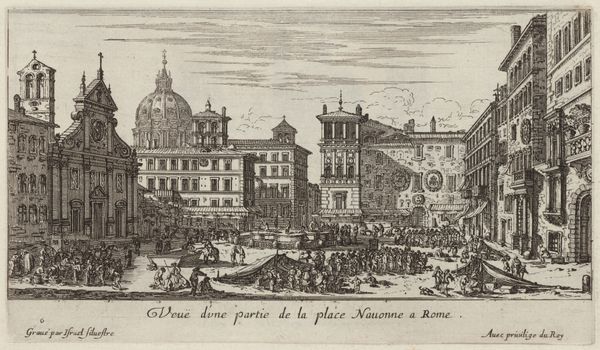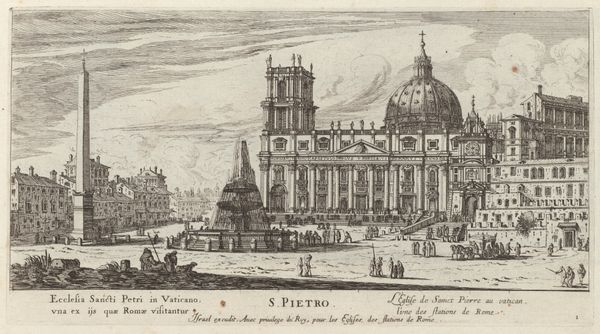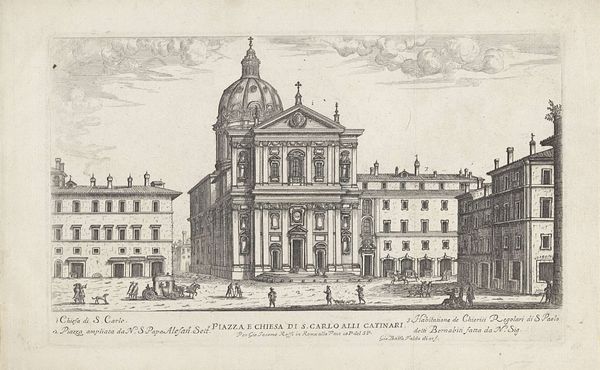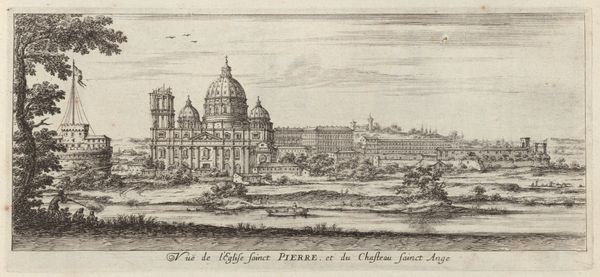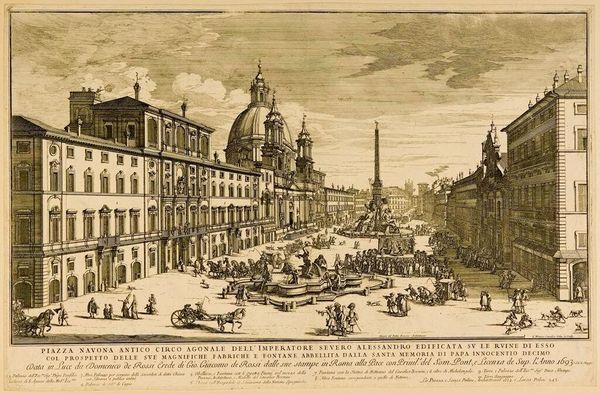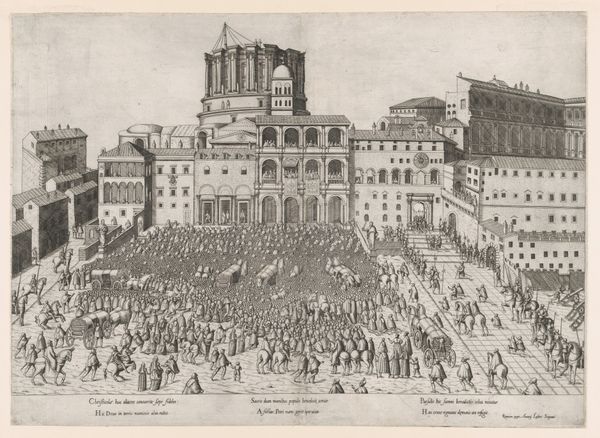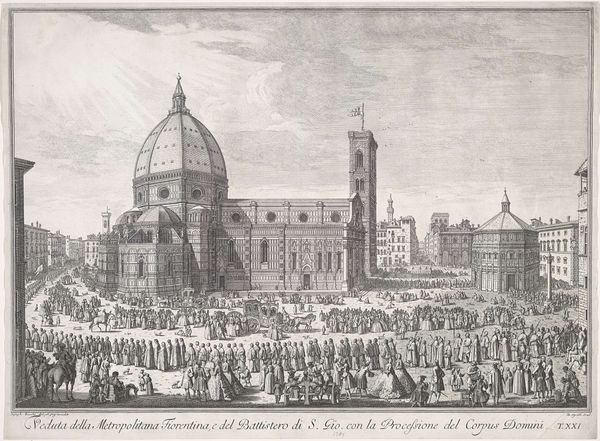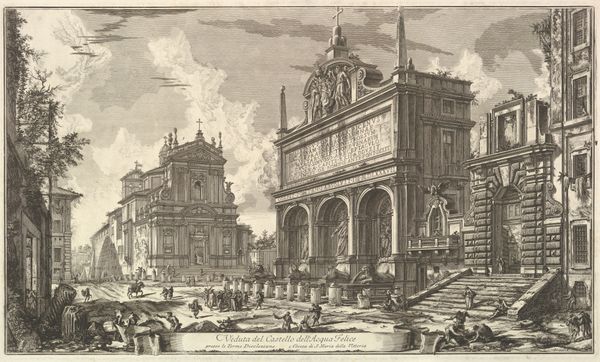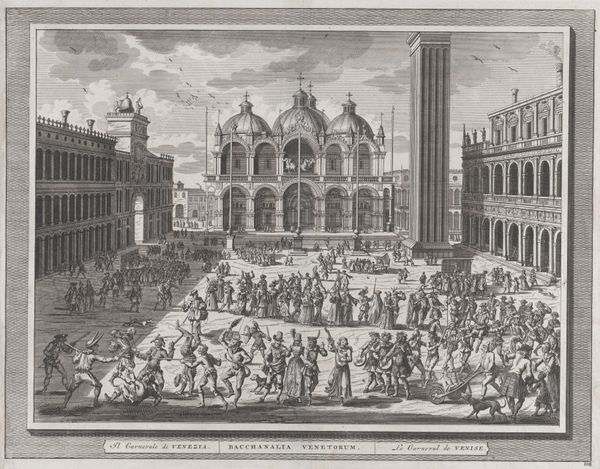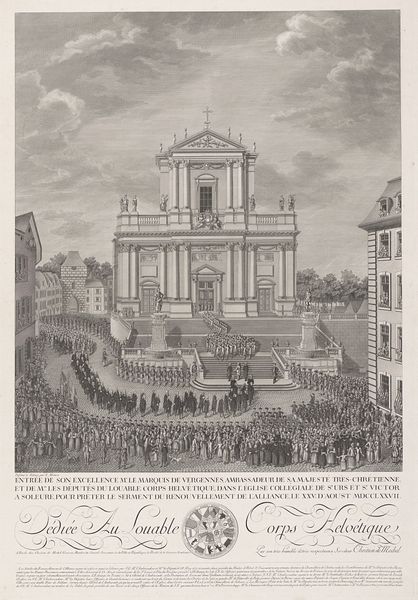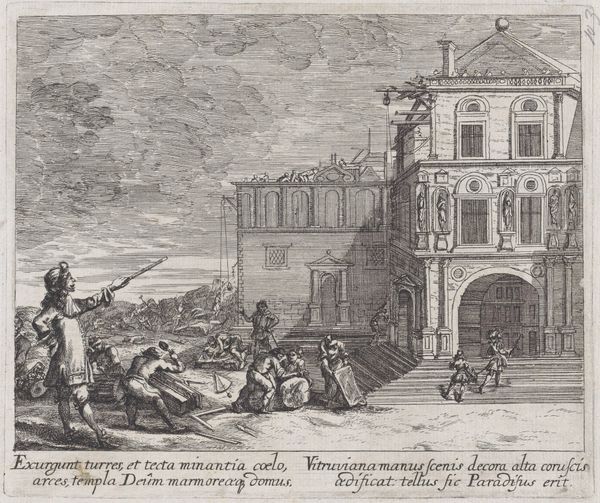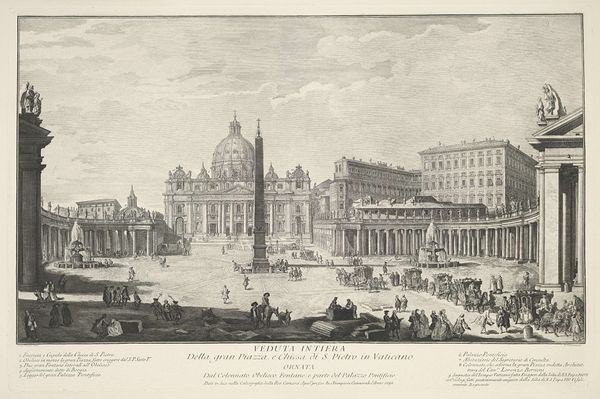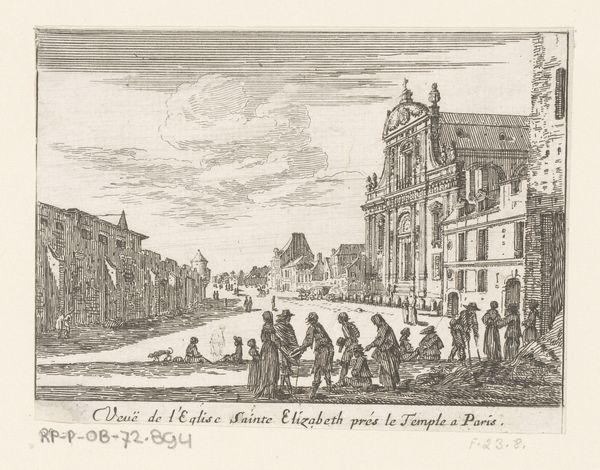
Veuë de la place et de l'Eglise de S. Piere et du Palais du Pape appellé le Vatican 1640 - 1660
0:00
0:00
print, engraving, architecture
#
baroque
# print
#
landscape
#
form
#
line
#
cityscape
#
engraving
#
architecture
Dimensions: plate: 11.5 × 19.7 cm (4 1/2 × 7 3/4 in.) sheet: 21.1 × 33 cm (8 5/16 × 13 in.)
Copyright: National Gallery of Art: CC0 1.0
Editor: This engraving, titled "Veuë de la place et de l'Eglise de S. Piere et du Palais du Pape appellé le Vatican," created between 1640 and 1660 by Israel Silvestre, offers a sweeping view of St. Peter's Square. I’m struck by the bustling activity depicted – the crowd feels like a political statement of some kind. What are your thoughts on this print? Curator: That's an astute observation. Beyond its architectural depiction, this engraving offers a powerful statement about papal authority and the urban landscape. Consider how Silvestre uses the relatively new medium of reproducible print. He circulated these images to broaden knowledge of papal power beyond Rome. The sheer scale of St. Peter’s, emphasized by the bustling crowds, conveys a message about the global reach of the Catholic Church. Does the position of the viewer impact this power dynamic? Editor: It feels like the artist deliberately positioned us, the viewers, as if we are standing among the public, perhaps to include us in that feeling of awe. Curator: Exactly! It situates us within a particular social and political context. Now, think about the artistic choices here: the linear perspective, the details captured. How do these formal elements play into constructing that message of papal authority and public engagement? Editor: Well, the use of precise lines really emphasizes the grandeur of the architecture. It creates this sense of order and permanence, I guess reinforcing the idea of an unshakeable institution. The artist must be supportive of that agenda. Curator: Or working to create something for a certain clientele who desires to promote their point of view? Consider also the potential socio-economic backgrounds of those within the "crowd" --are we sure we are all meant to be in awe? How are we invited to look, and for whose purposes? These choices create a dominant narrative, but we must remain mindful of those historical erasures when approaching works like this one. Editor: I hadn't considered how those choices might be intentionally designed to assert dominance. Curator: Looking critically at who is included, who is excluded, and whose narrative is being privileged can reveal the subtle power dynamics at play. Editor: Thank you. That's a completely different perspective, and it gives me a deeper appreciation of the print. I'll certainly keep that in mind when studying other works of art in the future. Curator: And I appreciate you identifying the nuances of propaganda!
Comments
No comments
Be the first to comment and join the conversation on the ultimate creative platform.
